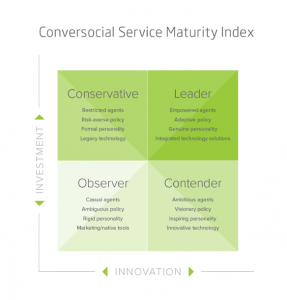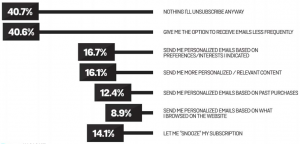Moody’s designed a prototype office to engage hybrid employees. It’s changing how everyone works
The financial services giant redesigned part of its New York office to fit the new way people work.
BY Nate Berg
Like many companies, the global financial services firm Moody’s has been looking at its office design a little differently over the past few years. With 15,000 employees working in more than 40 countries, the company has a lot of office real estate. Since adopting a policy allowing remote work during the pandemic, most of that office space has been underutilized.
“What we learned as an organization was that the way our employees will engage with physical office space is going to change,” says Doug Ryker, head of global real estate and workplace strategy for Moody’s.
So, the company decided that its physical office space had to change as well.
Moody’s is now in the process of a general rethinking of its office design, and a reconsideration of what offices should do in the era of hybrid work. It has started with a radical reinvention of one floor of the company’s New York offices, on the top floor of a 52-story tower in downtown. Gone are all private offices, assigned desks, and even most walls. In their place are lounge-like meeting areas, social spaces, and flexible rooms that can morph to accommodate everything from one-on-one meetings to massive investor events. The floor’s impressive views, which were previously shuttered way behind the doors of fancy private offices, are now eye candy for all.

A prototype for a broader rethinking
The company calls its new floor a prototype, and it’s one of the more human-centric examples of companies creating post-pandemic offices. That’s because employees themselves were closely involved in guiding how the new space would look.
In Fall 2021, Moody’s created a working group of staff participants within its New York office to rethink the workplace. “We just sat down with them for a period of months and got them thinking and talking along with us about the art of the possible, what we could do, what was not working well, what they wanted to see,” says Peter Smith, Moody’s senior vice president of global real estate project management and workplace strategy.
The nature of Moody’s business often revolves around confidential client finances and investments, so most work tends to take place in private offices. Private offices comprise between 30% and 40% of a typical floor in Moody’s layouts, according to the company. But with people working remotely, the company found less need for so many private rooms in its physical office. Members of the working group prioritized creating more space for small group meetings, as well as flexible areas that could be used for different forms of collaboration and social interaction.
Working with Huntsman Architectural Group, a commercial interior design firm, Moody’s turned a floor of cell-like offices into a mostly open space of collaboration. Small nooks create room for one-on-one interactions, while larger glass-walled pavilion structures create a slight sense of privacy. Movable walls and furniture allow spaces to flex up or down based on needs, and the entire floor has become a popular place for workers from Moody’s other nine floors in the building to come and get a change of scenery.
“What we talked about was, let’s make it an adaptive environment so that we could learn as we go,” says Sandra Tripp, a Principal at Huntsman Architectural Group. “It was clearly going to be a place where people were going to come in to do what they couldn’t do when they were working remotely. Being social. Utilizing technology. It had to be better than what they could get at home.”
That thinking led to a focus on AV and IT equipment, and ensuring that any meeting with a combination of in-person and remote attendees would feel smooth on both sides of the camera. One part of the office does this in a unique, almost anti-conference room way, with a round layout of lounge-style seats and video screens embedded in the walls. No doors close off the space, but it creates a kind of fireside chat environment that has been popular with workers.

Tripp says post-occupancy surveys of the space show people using this teched-out room even when there’s no need for a remote connection. “It’s more often used when someone just wants to grab someone and have a quick meeting and feel like they’re in a more private environment,” she says. “That was a great takeaway for us—that we may need to develop yet another piece in our kit of parts that addresses this need without going full bore in with all the technology.”
The floor also had to provide a range of space types to accommodate what workers do in a typical day. Tripp says it couldn’t all be fun, informal meeting spaces. There also had to be places where employees could duck away for some quiet, or simply close a door behind them. “If you’ve already made the commitment to come into the office for the day, let’s make sure we’ve provided all the types of spaces you might need,” she says.
Ryker says the office design strategy is working. “It’s absolutely drawing people in. Not four days a week, every week. But when they need to get together, it affords them the space that traditionally we’d have to go out and outsource.”

Flexible, for both the formal and informal
Tech-enabled, in-person events seem to be the most important use case, according to Smith. The floor’s adaptable spaces have made it easy for big meetings and presentations to happen on site without a lot of planning. Tables were recently rolled out of a room to make space for seats to accommodate a 40-person meeting. “The space is beginning to evolve that way as people figure out different ways that they can use it,“ Smith says. “It’s just sort of building on itself, which is amazing.”
The redesign also extends to two floors below, though more subtly. Workspaces on those floors were changed from a one-person, one-desk ratio to a completely unassigned model where employees book space when they need it. “That was a departure in itself,” says Smith. But now, workers from those floors have the ability to decide if they need a more traditional workspace for the day, or if they’d rather take meetings in the more open space on the top floor.
The ideas being explored in the office design are more than just a one-off. Moody’s calls it a prototype, but it’s becoming a model. Smith says that as the company expands or refreshes offices around the world, pieces and elements from the new office floor in New York are being integrated into their designs. Most importantly, he says, employee working groups are involved in every one of these projects, providing the company direct feedback about the new ways employees use their offices. “For any and all regional projects since we’ve really carried forward the same mindset,” Smith says.

ABOUT THE AUTHOR
(10)






